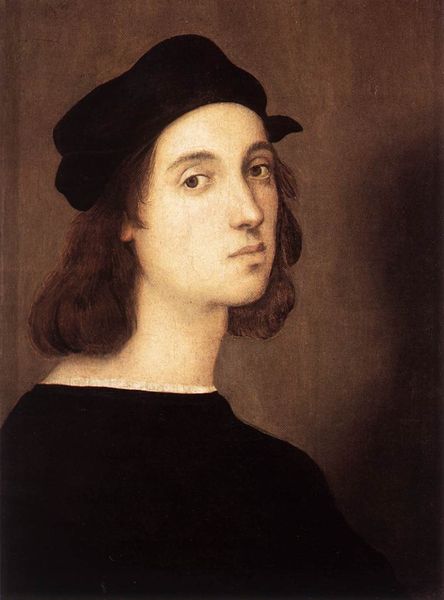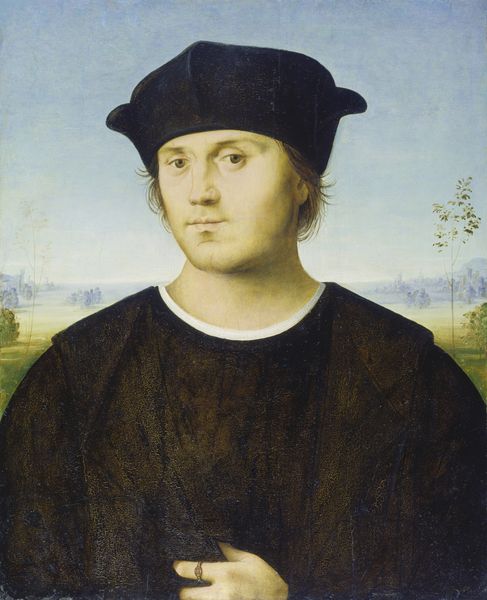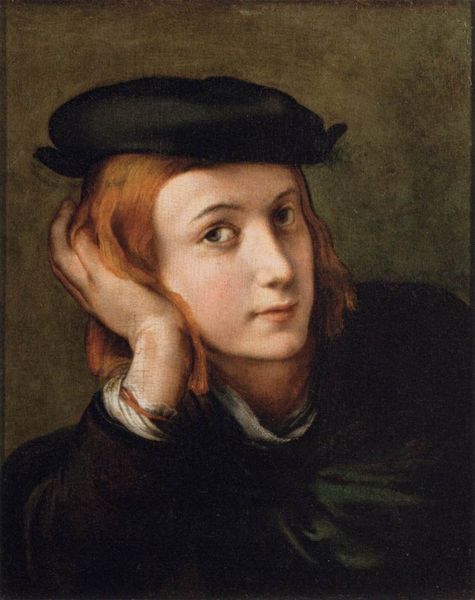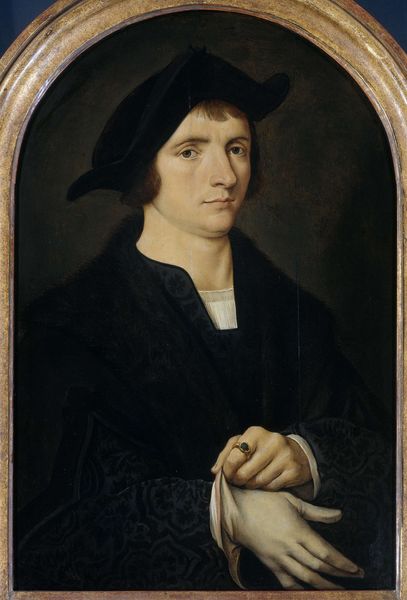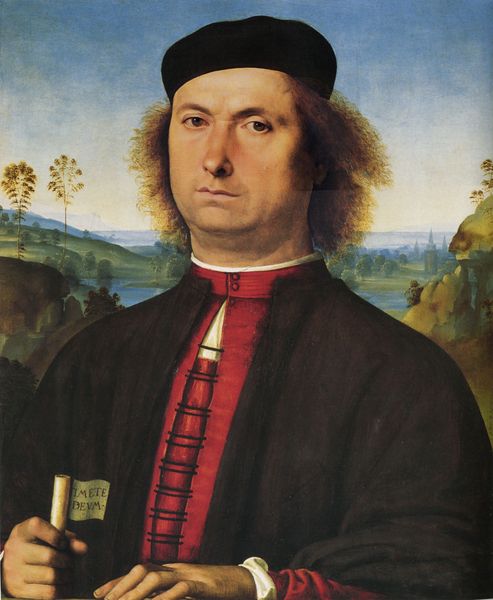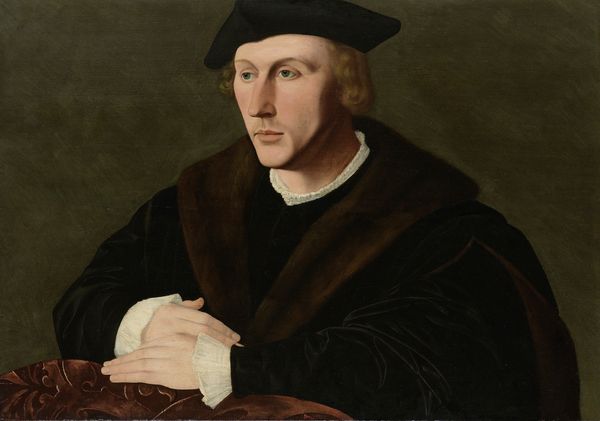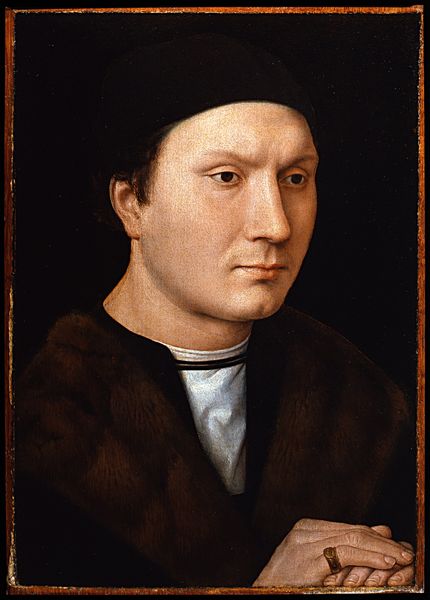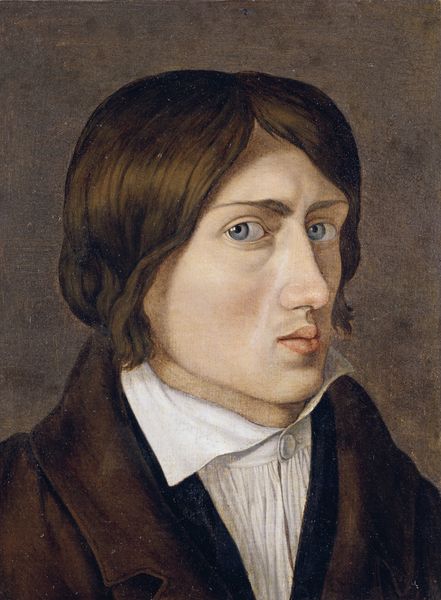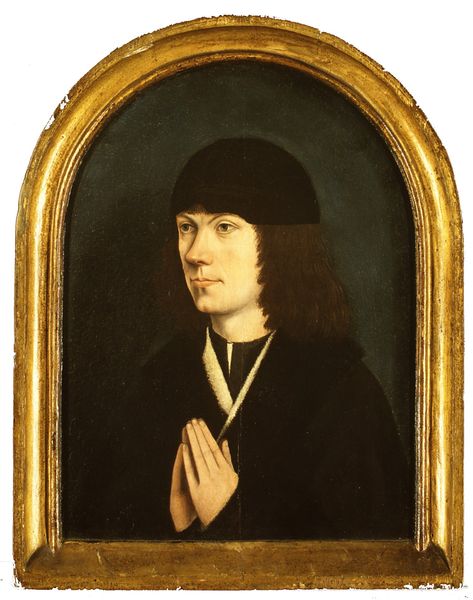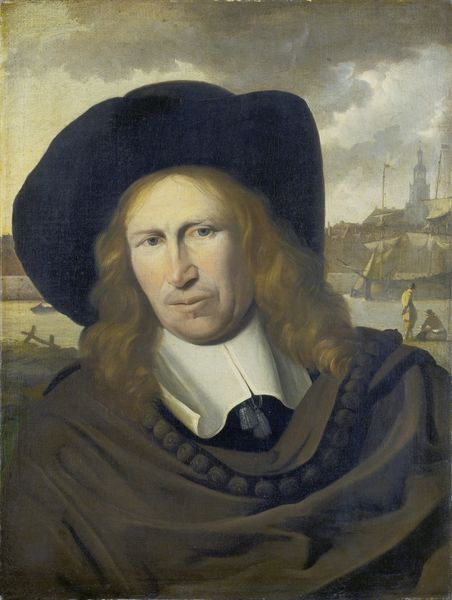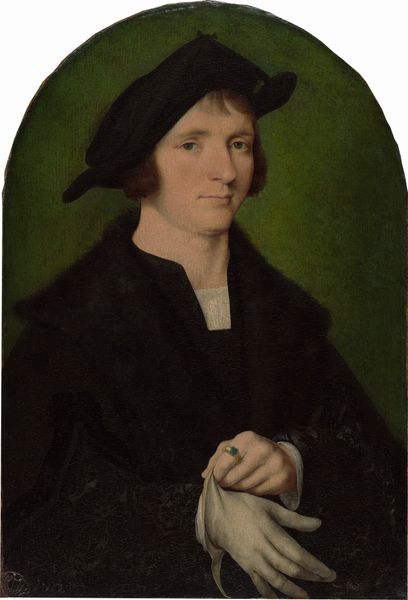
oil-paint
#
portrait
#
oil-paint
#
landscape
#
romanticism
#
cityscape
Dimensions: 45.0 x 31.6 cm
Copyright: Public Domain
Johann David Passavant painted this self-portrait using oil on canvas, a common medium in the late 18th and early 19th centuries for artists seeking prestige. The smooth surface and carefully blended brushstrokes speak to Passavant's technical skill, honed through academic training, which at the time emphasized precision and control. Note the contrast between the dark, velvety beret and coat, and the luminous skin of the face, achieved through layers of translucent glazes. The detailed rendering of the landscape, and his features, showcases the artist's mastery of observation and illusion. However, it's worth noting that even the most seemingly straightforward artistic choices are rooted in social context. The time and labor required for such a polished painting would have been considerable, reflecting the artist's investment in his craft and the expectations of a discerning clientele. Ultimately, understanding the materials and processes behind this self-portrait allows us to appreciate not only Passavant's individual talent, but also the broader cultural values that shaped his artistic practice.
Comments
stadelmuseum about 2 years ago
⋮
A German painter and art historian under the Italian sun: programmatically clad in Old German garb, Passavant paints himself in his adoptive home, in the style of his idol, Raphael. From 1817 onwards, he lived in Italy for ten years and belonged to the Nazarenes. Their belief in the renewal of art through Christendom is exemplified in the juxtaposition of a Roman heathen ruin and a Christian church in the background. In 1840 Passavant ended his artistic activities and took up the position of director of the Städel Museum.
Join the conversation
Join millions of artists and users on Artera today and experience the ultimate creative platform.
